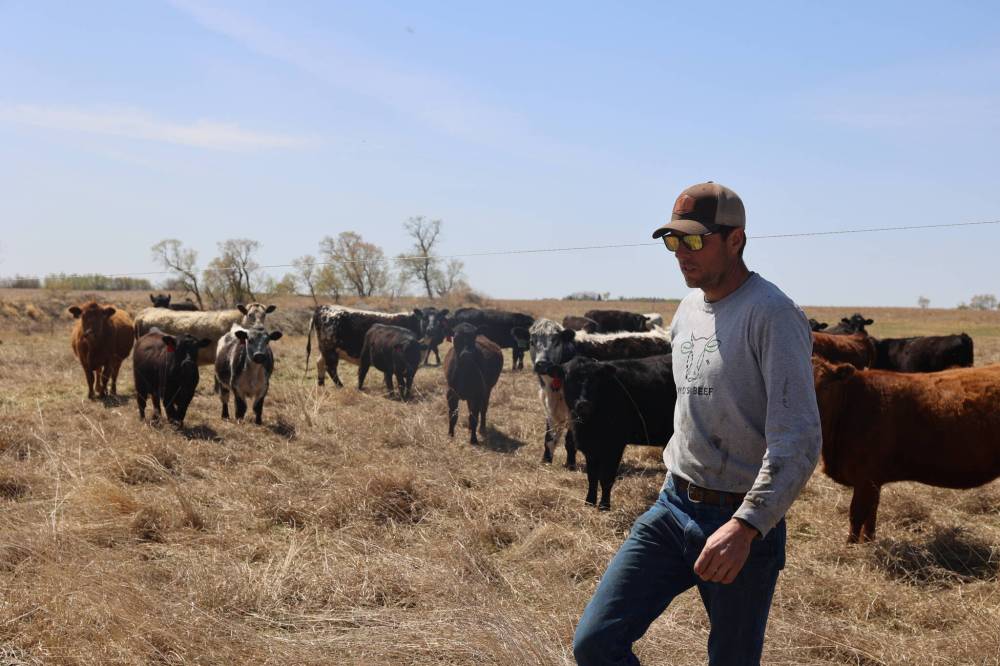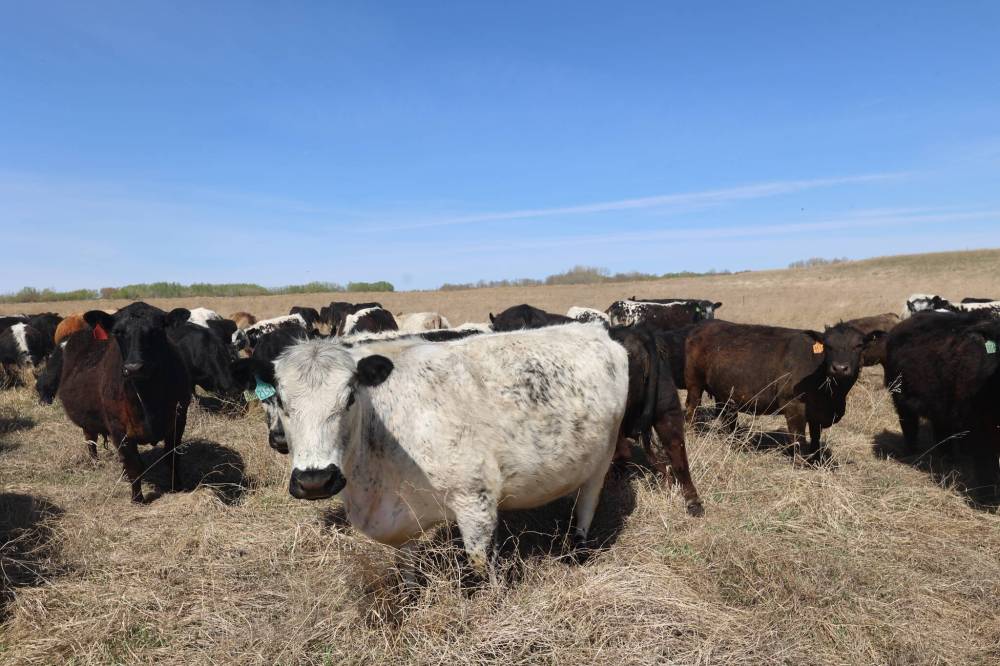Beef prices surge, but costs continue to climb
Advertisement
Read this article for free:
or
Already have an account? Log in here »
We need your support!
Local journalism needs your support!
As we navigate through unprecedented times, our journalists are working harder than ever to bring you the latest local updates to keep you safe and informed.
Now, more than ever, we need your support.
Starting at $15.99 plus taxes every four weeks you can access your Brandon Sun online and full access to all content as it appears on our website.
Subscribe Nowor call circulation directly at (204) 727-0527.
Your pledge helps to ensure we provide the news that matters most to your community!
To continue reading, please subscribe:
Add Brandon Sun access to your Free Press subscription for only an additional
$1 for the first 4 weeks*
*Your next subscription payment will increase by $1.00 and you will be charged $20.00 plus GST for four weeks. After four weeks, your payment will increase to $24.00 plus GST every four weeks.
Read unlimited articles for free today:
or
Already have an account? Log in here »
The price of beef has hit record highs in Canada, with live cattle prices doubling over the past three years.
At the heart of the issue lies a sharp drop in cattle numbers, creating a supply crunch that has collided with sustained consumer demand, Boyd’s Beef owner Ryan Boyd told the Sun.
“We’re seeing calf prices over $3,000 per animal today,” Boyd said. “Just three years ago, that same calf would’ve sold for less than $1,500.”

Boyd's Beef owner Ryan Boyd walks across his farm near Forrest on Friday afternoon. Boyd attributes the surge in beef prices to a steep decline in cattle herd sizes — a result of years of low profitability in the industry. (Abiola Odutola/The Brandon Sun)
Boyd said his company’s cattle are raised year-round on managed pastureland without grain, antibiotics or hormones — a model that is both environmentally resilient and cost-effective. “Our grazing methods allow the land to recover, the biodiversity to flourish and the soil to regenerate.”
Across North America, consumers are experiencing sticker shock at the grocery-store meat counter as beef prices continue to climb by as much as 30 per cent over the past year, RSK Farms owner Rae Kopeechuk, who has been in the business for more than 60 years, told the Sun.
The senior said the roots of the current price hike stretch far deeper than supply chain bottlenecks or inflation. Behind the surge, he said, is a story of generational hardship, shifting market forces and a cattle industry fighting to stay alive in the face of unrelenting challenges.
“Yes, there has been an increase, but it’s long overdue,” he said.
“For five years prior, I never made a profit in the purebred business. Our inputs kept climbing — hay prices, land costs, silage, machinery — and there was no relief.”
The primary factor driving up beef prices is a sharp contraction in the supply of cattle.
Boyd attributed the surge in beef prices to a steep decline in cattle herd sizes — a result of years of low profitability in the industry. “For five or six years, margins were so low that many producers sold off herds, retired or switched to more profitable grain farming,” he added.
The shortage of cattle is not limited to Canada, Kopeechuk noted.
“There’s a shortage of cattle across the North American continent,” he said. “Our herds are down 40 per cent, and that’s why the beef prices have gone up.”
The 40 per cent reduction didn’t happen in a vacuum. According to the senior, years of low returns, worsening droughts, and rising feed and fuel prices forced many ranchers to make the painful decision to downsize herds or get out of the business altogether.
While higher prices might suggest healthier margins for farmers, Kopeechuk said costs have doubled, largely driven by the price of corn and transportation. Fertilizer, diesel fuel, veterinary supplies and replacement equipment have all become more expensive, he said.
Land costs are also a growing issue. Marginal land once used for grazing is now being snapped up or leased for more lucrative crops like canola or lentils.
“Three years ago, I rented land for 80 cents a day per cow-calf pair. Now it’s three times that,” Kopeechuk said. “With tighter margins, even small increases in rent or feed can tilt the balance between profit and loss.”
Adding to the strain, inflation has made essential equipment and infrastructure upgrades prohibitively expensive. A new baler, tractor or fencing system now costs thousands more than it did just a few years ago.
“You can’t just raise cattle on hope,” the RSK Farms owner said. “At some point, the math has to work.”
Boyd said the improved market conditions that finally make cattle farming profitable again are now creating a new barrier — entry costs.
“Prices are so high now, it’s difficult for young people to get in,” he said. “Even we sold off a significant part of our herd last year to reduce debt, and in hindsight, we might have done better holding onto them.”
Faced with these pressures, many cattle producers are adapting their strategies to survive. One growing trend is the shift from traditional hay-based feed to silage, which allows for greater feed efficiency and can reduce land use, but comes with its own high input costs and logistical challenges.
Boyd said his company, which he took over from his father 20 years ago, decided to invest in grain farming because it has seen more stable returns, prompting them to convert pastureland to crops like wheat, soybeans and canola.
“It’s less labour-intensive. You seed in the spring, harvest in the fall, and you’re not on-call 24-7 like you are with cattle,” he said.
Others are turning to selective breeding and genetic improvement programs, aiming to produce animals that grow faster, require less feed, and yield higher-quality meat.

Boyd's Beef sold off a significant part of its herd last year to reduce debt, but in hindsight, says Boyd, "we might have done better holding onto them." (Abiola Odutola/The Brandon Sun)
For Kopeechuk, investing in genetics was a long-term play.
“I built a good herd of cattle through careful breeding, hoping for good times,” he said. “Those good times have come — but how long they last is the question.”
The current high prices may not be sustainable, and producers are aware of the risk of market swings.
“Two years ago, a bred cow sold for $1,600. Today, it’s $5,000,” the senior said. “But if prices fall, those buying now hoping for long-term gains may be in for a rude awakening.”
The price increase follows a natural cycle in the cattle industry, Boyd added.
“It’s about a 10-year cycle,” he said, referring to patterns of herd expansion and liquidation. “The last peak was in 2015. We’re at another high now.”
Boyd also pushed back against long-standing criticisms of beef’s environmental impact.
“The methane narrative is misleading. Cattle are part of a natural carbon cycle that can sequester carbon when pastures are managed well.”
From the consumer side, the rising cost of beef is difficult to ignore.
“People will spend on entertainment, on campers and boats,” Kopeechuk said. “Beef is still a great source of protein, and there are affordable cuts — ribs, stewing meat — that can go a long way.”
If high beef prices persist, some producers may begin rebuilding their herds by retaining more heifers and investing in long-term growth. But that process takes time — at least three years from heifer retention to full productivity — and demands upfront investment that many farmers are hesitant to make.
“You can raise the number of cows in three years if you keep your good females,” Kopeechuk said. “But you’ve got to have the feed, the land, and the money to do it. And there’s no guarantee the market will still be strong when those animals are ready.”
Despite the uncertainty, Kopeechuk remains deeply committed to the ranching life. Now semi-retired, he has passed much of the operation to his two sons but continues to stay involved. For him and many others, ranching is more than a business — it’s a legacy.
“It’s a lifestyle,” he said. “We raise good, clean animals in this country. People take pride in what they do. And while times are better now, we’ve learned not to take it for granted.”
For now, Boyd remains cautiously optimistic.
“We’ve weathered the lean years, and we’re grateful for the renewed interest in beef production. But if we want to keep young farmers in the game, we need policies and programs that support sustainable entry and retention in the cattle industry.”
» aodutola@brandonsun.com
» X: @AbiolaOdutola
